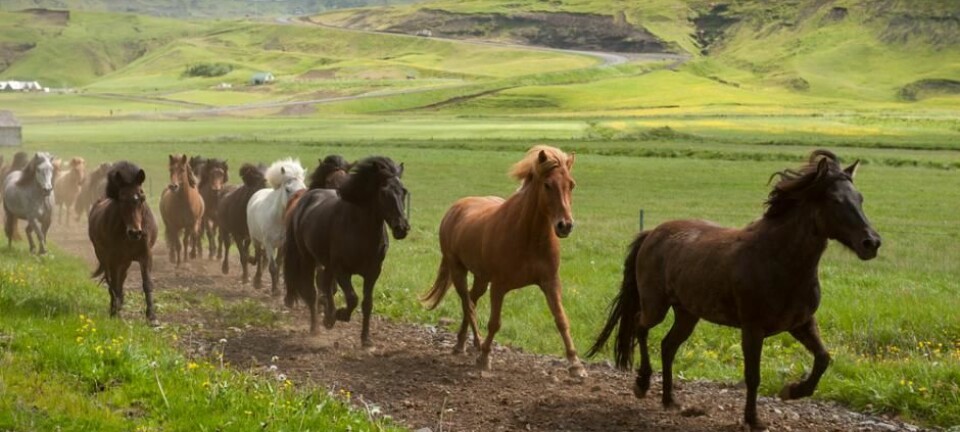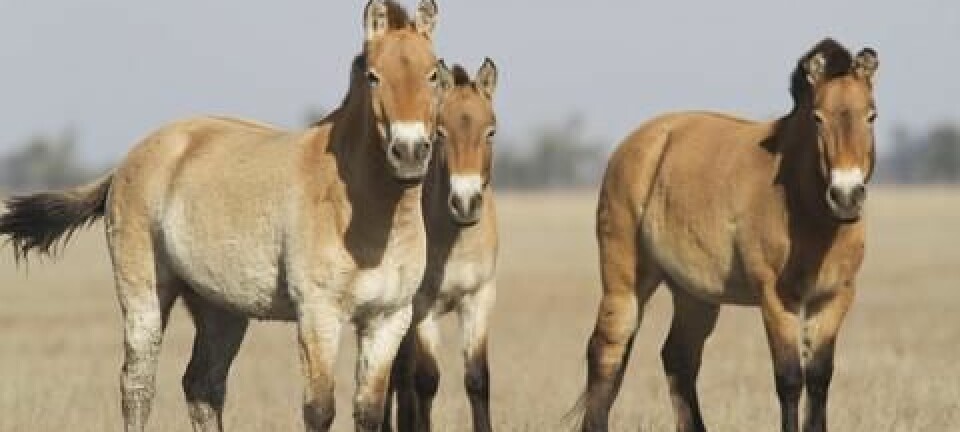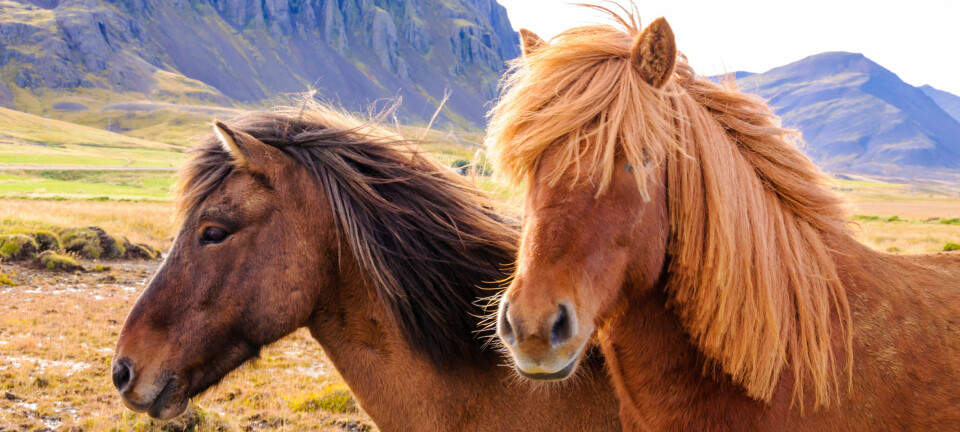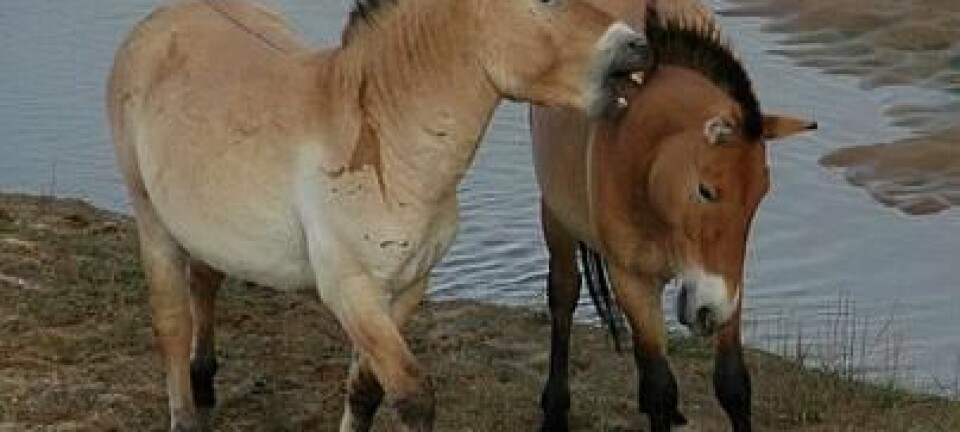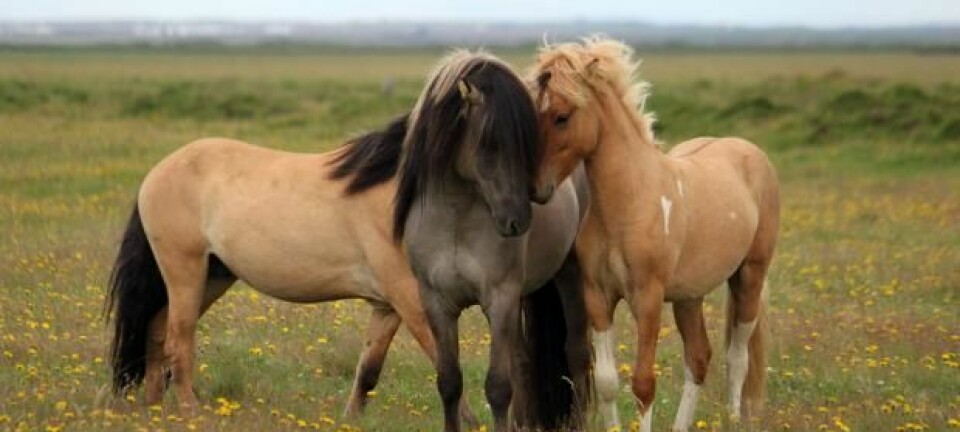
Horses can communicate through symbols
Horses can learn to use symbols to tell their owner if they are cold, shows new research.
Horses can be taught how to use written symbols to communicate their needs to their owners, shows a new study.
“It’s surprising as the scientific community has so far been sceptical about horses ability to use two-dimensional symbols to communicate,” says Karina Bech Gleerup, Assistant professor from the Department of Large Animal Sciences, University of Copenhagen, Denmark. She was not involved in the new study.
Horses learnt to point at signs
In the new study, recently published in the scientific journal Applied Animal Behaviour Science, scientists trained 23 race horses to point their muzzles towards one of three written symbols.
The choice was between a black horizontal line on a white background, which indicated that they wanted a blanket, a vertical black line on a white sign to ask for the blanket to be taken off, and a blank white sign meaning no change.
The horses received a treat after pointing to one of the signs, and according to their choice they were either given a blanket, had the blanket removed, or no change at all.
After a few weeks of training, all of the horses had learnt to point to the correct symbol in order to receive a blanket.
Horses chose a blanket when it was cold
The scientists tested whether the horses fully understood the meaning of the symbols by presenting them with the choice of symbols under different weather conditions.
The horses’ choices suggested that on warm, sunny days, the horses chose the symbol associated with ‘blanket off’ if they already had a blanket on. And if they did not already have a blanket, they simply chose the sign that meant ‘no change’.
But on stormy, cold days, 10 out of 12 horses without blankets pointed to the sign indicating that they now wanted a blanket. The horses who already had blankets opted for ‘no change.’
The results indicate that the horses understood the consequences of their choice.
Better communication between horses and people
“It’s plausible that horses made their choices because they wanted to cover up when it’s cold,” says Gleerup, who has previously studied how horses exhibit pain through their facial expressions, body language, and behaviour.
“Horses have been tamed over many hundreds of years so they have begun to work with us. Horses are very good at reading subtle changes in facial expressions. This study gives us even more knowledge about how we can communicate with them,” she says.
Horses use symbols
Janne Winther Christensen from the Department of Animal Science - Behaviour and stressbiology at Aarhus University, Denmark, studies horse behaviour and calls the new results exciting.
“It’s exciting and it’s a really good idea to test the horses’ understanding of the symbols by giving the choice of blanket or no blanket,” she says.
But she is not surprised that the horses could use the symbols to communicate.
“Horses are really good at learning signals from people and connecting signals with consequences. Horses can easily distinguish between visual contrasts,” she says.
Blankets can damage horses
Previous studies have shown that horses can communicate their preferences in different situations to humans.
For example, they can learn to push on a plate with their muzzle to get access to different levels of social contact with other horses. But what surprises Christensen most about the new study is that the horses chose to have the blanket at all.
“Horses often get stomach sores from having a blanket. If it’s raining, or if they roll over, the blanket becomes wet and heavy. We see some horrible damage when blankets are not changed often enough. We thought that horses would rather not wear them at all,” she says.
Her advice is that if you do not trim your horse then they do not need blankets, as their winter coat will keep them warm enough. But if you do trim your horse then it is a good idea to provide them with a blanket to stay warm. Check the horse daily for any sores, keep the blanket clean, and do not let it twist or fill with dirt, which can cause chafing, she says.
One of the horses in the new study points to a symbol, indicating that they would like to have a blanket on a cold, snowy day. (Video: Cecilie M. Mejdell, Turid Buvikemail, Grete H.M. Jørgensen og Knut E. Bøe)
-----------------------
Read the Danish version of this story on Videnskab.dk
Translated by: Catherine Jex
Scientific links
- "Horses can learn to use symbols to communicate their preferences", Applied Animal Behaviour Science (2016), doi: 10.1016/j.applanim.2016.07.014
- "Motivation for social contact in horses measured by operant conditioning", Applied Animal Behaviour Science (2011) doi: 10.1016







